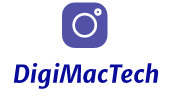Infrared (IR) touchscreens have become increasingly popular due to their robust functionality and ability to handle multitouch gestures. The technology behind these touchscreens enables precise touch detection, making them suitable for various applications, including interactive displays, kiosks, and more. In this article, we’ll delve into how infrared touchscreens manage multitouch capabilities, the underlying technology, and their key advantages.
Understanding Infrared Touchscreen Technology
Infrared touchscreens operate using a grid of infrared beams that are projected across the screen. These beams are emitted by light-emitting diodes (LEDs) placed along the edges of the screen and detected by photodetectors positioned on the opposite sides. When a finger or object touches the screen, it interrupts the infrared beams, and the exact location of this touch is calculated based on which beams were blocked.
Components of Infrared Touchscreens
| Component | Description |
|---|---|
| Infrared LEDs | Emit infrared light across the screen |
| Photodetectors | Detect the infrared beams |
| Controller | Processes the touch input data |
| Overlay Grid | Guide the infrared beams |
How Multitouch is Handled
The ability of infrared touchscreens to handle multitouch input is based on their grid of infrared beams. When multiple points of touch occur, the infrared beams are interrupted at various locations. The controller processes this data and determines the coordinates of each touch. This allows the system to recognize gestures such as pinch-to-zoom, swiping, and rotating.
Steps Involved in Multitouch Detection
- Infrared beams are emitted across the screen
- Touch inputs interrupt specific beams
- Photodetectors identify which beams are blocked
- The controller calculates touch coordinates
- Multiple touch points are processed simultaneously
Key Advantages of Infrared Touchscreens
Infrared touchscreens offer several advantages, making them an attractive choice for many applications. Here are some of the key benefits:
High Accuracy
Due to the precise detection of infrared beams, these touchscreens offer high accuracy in touch detection. This makes them suitable for applications where precision is critical.
Durability
Unlike capacitive or resistive touchscreens, infrared touchscreens do not rely on layers that can wear out over time. The absence of a physical touch layer makes them more durable and resistant to damage.
Multitouch Capability
Infrared touchscreens can accurately detect multiple touch points simultaneously, enabling advanced gestures and interactions.
Ease of Use
The technology is intuitive and does not require any special stylus or tool. Users can interact with the screen using their fingers, gloves, or any other object.
Applications of Infrared Touchscreens
Infrared touchscreens are used across various industries due to their versatility and robustness. Here are some common applications:
Interactive Displays
Widely used in museums, retail stores, and exhibitions, interactive displays with infrared touchscreens provide an engaging user experience.
Kiosks
Information kiosks in public spaces often use infrared touchscreens because of their durability and ease of use.
Healthcare
In healthcare settings, infrared touchscreens are preferred due to their ability to function even when users are wearing gloves.
Education
Interactive whiteboards and educational tools leverage infrared touch technology to create interactive and collaborative learning environments.
Conclusion
Infrared touchscreens offer a robust and efficient way to handle multitouch inputs, thanks to their grid of infrared beams and precise detection mechanism. With their high accuracy, durability, and ease of use, they are increasingly being adopted across various industries. Understanding how these screens handle multitouch functions can help in making informed decisions about their applications in different sectors.
